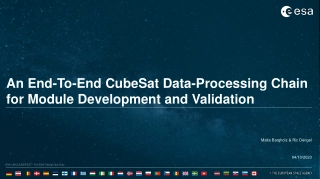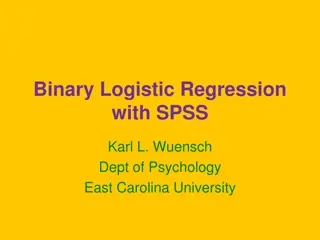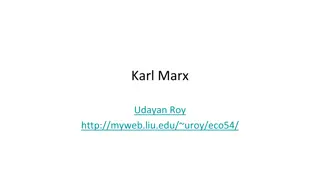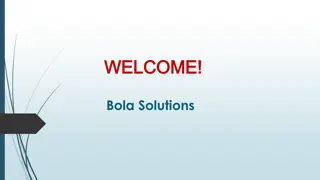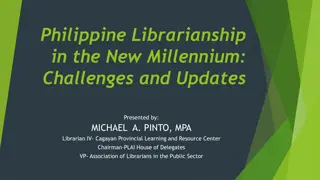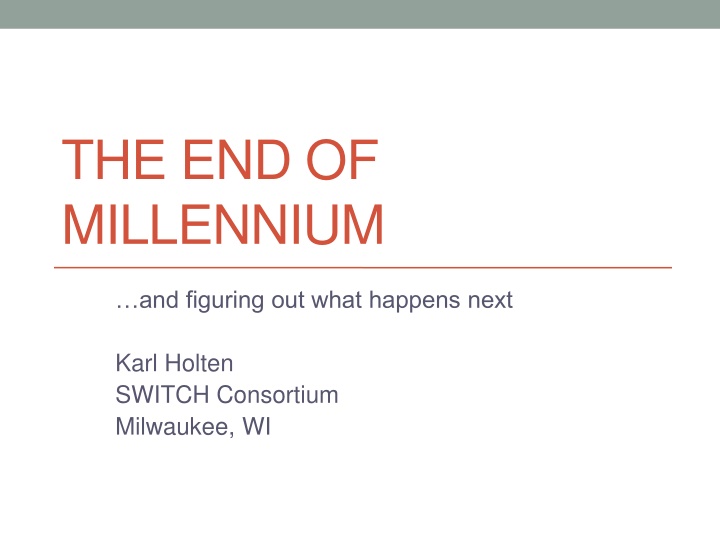
Predicting the Future of ILS Systems and the End of Millennium
Explore the upcoming changes in Integrated Library Systems (ILS), the implications of the end of Millennium software, and why updating ILS is crucial. Get insights into the potential risks and benefits of transitioning to modern systems.
Download Presentation

Please find below an Image/Link to download the presentation.
The content on the website is provided AS IS for your information and personal use only. It may not be sold, licensed, or shared on other websites without obtaining consent from the author. If you encounter any issues during the download, it is possible that the publisher has removed the file from their server.
You are allowed to download the files provided on this website for personal or commercial use, subject to the condition that they are used lawfully. All files are the property of their respective owners.
The content on the website is provided AS IS for your information and personal use only. It may not be sold, licensed, or shared on other websites without obtaining consent from the author.
E N D
Presentation Transcript
THE END OF MILLENNIUM and figuring out what happens next Karl Holten SWITCH Consortium Milwaukee, WI
A Bit of Background MLIS from University of Illinois Urbana-Champaign, Specializing in data curation. Lots of coursework in systems design and usability. Systems guy at SWITCH.
Disclaimer SWITCH is still in the middle of the ILS migration process Our server agreement expires 2015 Have not yet purchased a new ILS This presentation aims to be: Useful no matter where you are in the process Useful no matter what your position Somewhat vendor-neutral
You may ask this question Why update our ILS? Well, there s two answers to that
Look on the bright side! Next generation of products is already here Many new features and opportunities to improve workflow For example, take Sierra: No more modules! Everything in one program More integrated ERM More open architecture (PostgreSQL, APIs) means more third party applications will be developed Web or cloud based hosting
THE END OF MILLENNIUM IS NIGH At least one more Millennium release then what? My prediction: this will be the last major release III probably not going to develop two ILS s indefinitely Sierra released two years ago (2011) Lots of libraries making the switch- Sierra looks like III s platform moving forward Even if I m wrong about the timeframe, Millennium will be obsolete sooner or later, probably in the foreseeable future.
The End of Millennium As Millennium becomes increasingly obsolete, problems will slowly start to emerge . Development will stop- no more new features. Bugs and known issues will eventually go unfixed. User community will move on, so there will be less support New products and standards will come out that do not support Millennium
At this point, some of you might be feeling a bit nervous.
No, seriously, dont. Things aren t going to come to a crashing halt. Millennium not dead yet! One more major release still coming out, and probably some patches as well. But there is a lot to do Now is the time to start thinking about the future (If you haven t started already!)
So how do we start thinking about our ILS? Research, research, research! General Migration Process Vendor Specific Information Your Library s Needs Clean up your data
Research the process You need a plan. Get a view of the big picture first! Read books and journal articles. Follow gurus like Carl Grant and Marshall Breeding. Track websites, blogs, and listservs when you can. Code4Lib: http://www.code4lib.org/ Marshall Breeding: http://www.librarytechnology.org TechSoup Blog: http://www.techsoupforlibraries.org/bl og Integrated library systems: planning, selecting, and implementing (2010) ; Desiree Webber and Andrew Peters; Also available as an Ebsco e- book.
Research vendor-specific information Look at sales and technical documentation for new ILS s to learn about what each product can do. CSDirect has Sierra migration FAQ Talk to sales representatives about how the transition might look, and get a demo. Talk to other libraries who have already migrated about their experiences What would they do differently? What problems did they encounter? What advice would they give you about the process?
Research your librarys needs The parable of the blind men and the elephant Everyone has different areas of expertise and uses the ILS for different tasks. You may not have the whole picture, but you can contribute to the discussion. Focus on goals, not just methods The way tasks are accomplished may change, but the goals often remain the same!
Some ways to connect Group discussions and meetings For larger organizations, may be done on a departmental basis If you are managing discussion: Guide it with questions, but work- related digressions are perfectly fine If you are participating: Share your thoughts but allow everyone to have a voice. Make sure what is being said is somehow documented as well. Send out survey/questionnaire (www.surveymonkey.com) May flesh out issues that weren t brought up in discussion Might also get more fully thought through responses But don t necessarily expect a huge response rate
Cleaning up your data Think of migrating systems like moving from one house to another. You don t move everything when you go from one house to another- takes more time and is more expensive Moving is a lot easier when you clean up by removing broken and no longer used stuff
Cleaning up your data Many kinds of data: Login Accounts Statistics Groups Location Codes Scoping User Initials Patron Accounts Bib Records Templates This makes for many places to look for bad data
Cleaning up your data But there are basically three main problem types: Obsolete data Bad code caused by an invalid value in a field Such as blank, null , or special character values. Bad code that is undefined or poorly defined
Obsolete Data Over time people leave, projects finish, temporary files go undeleted If you are an employee, try to clean up projects once you re done. If you are an admin, talk to people before you start deleting stuff. Sometimes it might be easiest to assess what is still being used, rather than what is not. Did I mention to back up your data before you start?
Finding Bad Code Checking for bad codes Use Edit-> Preferences to make errors more visible. Run Statistics report in Admin Module to find bad code in bibs Often comes from out of date templates & old data as well
Bad Code Invalid Characters One type of Bad code are values in fields that are invalid characters, blank or null These may even have a meaning listed, but when they are migrated to a new ILS they have the potential to create huge problems. A field type using a valid character type should be created, and the records reassigned to that field type.
Bad Code- Undefined Values The second kind of bad code are codes that are not set in the validity table for a field. A validity table tells the system which values in a field are okay to use, and describe what the code means. Without these, the code has no meaning. The bad code needs to be re-added to the validity tables in order to get it in a list. From there, you can use global update to change the values, or properly define the field.
Innovative also offers consulting on this topic Check out Bad code FAQ in CSDirect Location Code Change Service Helps plan and implement changes to location code structure System Checkup Service Advises on improving workflows and cleaning data Contact the sales department in CS Direct for more info.
Applying these ideas to Sierra Those three tips are critical in any migration, but how do they look in the real world? Let s take the Sierra migration process and see how these practices are going to help.
Before Purchase Researching the process is crucial. Helps to justify new ILS to stakeholders and builds credibility. Gives you material to plan out the process and understand where your library is in it. Helps you come up with questions you might not know to ask. This can help you key in on areas that need improvement before you even make a purchase.
Database Seeding and Migration The Sierra migration process starts by Innovative seeding the new Sierra database using your old database. Decisions about how to handle the bad data need to be made one way or another- why not earlier in the process? Having good data when you start will save both time and money when migrating. Will also mean less problems occur down the line
Setting up Workflows and User Accounts After the database has some sample data, III will set up an Admin account. Applications, Permissions and Workflows are set up by your admin. Understanding what functions everyone needs and will use helps the admin translate Millennium practices over to the new ILS.
Launch Day As you get closer to launch day, more functionality will be granted to admins and test users. Communicating with your Migration Team leader will help you figure out common problems and how they can be resolved. On launch day, the system will go live. You will need to be able to resolve any potential issues quickly, so being forewarned is critical. Effective communication with other libraries will also help you deal with whatever problems spring up at launch and beyond.

